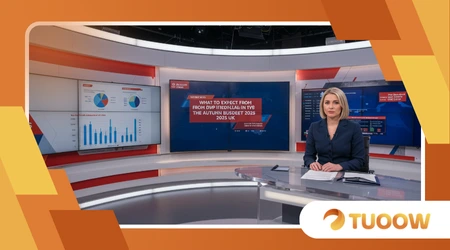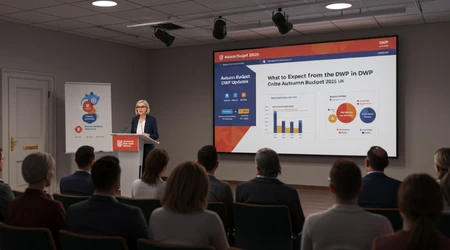What to Expect from the DWP in the Autumn Budget 2025

The DWP in the Autumn Budget 2025 looms large for millions across the UK, as the Department for Work and Pensions navigates a tightrope of economic pressures and social needs.
With inflation stabilising but cost-of-living challenges lingering, expectations are high for impactful policy shifts.
This article dives into what the DWP might deliver, offering clarity on benefits, reforms, and support systems.
From Universal Credit adjustments to disability benefits, we’ll unpack the potential changes, grounded in current realities and informed speculation, to help you understand what’s at stake.
The Autumn Budget, set for late October 2025, arrives amid a complex economic landscape. Labour’s government, under Keir Starmer, faces scrutiny to balance fiscal responsibility with social equity.
The DWP, overseeing £200 billion annually in welfare spending, is pivotal. With 23 million people relying on benefits (DWP, 2024), any shift ripples widely.
Will the DWP in the Autumn Budget 2025 prioritise fairness or austerity? This question drives our exploration, blending policy analysis with real-world implications.
Universal Credit: Incremental Tweaks or Bold Overhaul?
Universal Credit (UC) remains the DWP’s flagship benefit, supporting over 6 million claimants. The DWP in the Autumn Budget 2025 could refine UC’s framework.
Recent X posts suggest a push for “urgent rethinking” of cuts (@BENEFITS_NEWS, April 2025). Adjustments might include raising standard allowances to match inflation.
For example, a single parent like Sarah, juggling childcare and rent, could see her £334 monthly payment rise modestly.
Yet, bold reform seems unlikely. The Trussell Trust’s 2025 report warns that poverty costs the economy £38 billion annually in lost output.
++ How to Link Your Benefits to NHS Prescription Discounts
Incremental changes, like reducing the taper rate from 55% to 50%, could help workers like Tom, a part-time barista, keep more earnings. Such tweaks would signal pragmatism over revolution.
The DWP in the Autumn Budget 2025 might also streamline UC’s digital systems. Claimants often face delays, with 15% waiting over five weeks for payments (DWP, 2024).
Faster processing could ease stress for families like Sarah’s. However, budget constraints may limit tech upgrades, leaving systemic issues unresolved.

Disability Benefits: Addressing Access and Fairness
Disability benefits, like Personal Independence Payment (PIP), are a lifeline for 3.5 million claimants. The DWP in the Autumn Budget 2025 faces pressure to reform PIP’s assessment process.
Current assessments, often criticized as rigid, reject 40% of initial claims (DWP, 2024). For someone like Emma, with chronic fatigue, navigating appeals is exhausting.
Easing eligibility criteria could help. A simplified process, perhaps with virtual assessments, might reduce backlogs.
The DWP could also increase PIP rates, currently £26-£101 weekly, to reflect rising care costs. Such changes would resonate with advocacy groups pushing for fairness.
Also read: What Happens During a DWP Compliance Interview?
However, fiscal caution may prevail. Expanding access risks straining budgets, especially with an ageing population.
The DWP in the Autumn Budget 2025 might opt for targeted increases, like boosting mobility components, to support claimants like Emma without overhauling the system.
Pension Reforms: Securing the Future or Plugging Gaps?
State pensions, supporting 12 million retirees, are a DWP cornerstone. With the triple lock under scrutiny, the DWP in the Autumn Budget 2025 could adjust pension uprating.
The triple lock ensures pensions rise by the highest of inflation, earnings, or 2.5%. In 2025, inflation hovers at 2.3% (OBR, 2025), suggesting modest uplifts.
For retirees like John, a former mechanic, even small increases matter. A £10 weekly boost could cover rising energy bills.
Yet, scrapping the triple lock, as some economists urge, risks alienating voters. The DWP might instead cap upratings to save £1 billion annually.
Read more: Student Finance and Benefits: Can You Get Both?
Another focus could be Winter Fuel Payments. With energy prices volatile, reinstating payments for all pensioners, not just those on Pension Credit, is possible. This would help John stay warm, but fiscal hawks may push for means-testing to limit costs.
Cost-of-Living Support: Temporary Relief or Systemic Change?

Cost-of-living payments, vital during 2022-2024, may return in the DWP in the Autumn Budget 2025. With energy bills still biting, one-off payments of £300 could aid low-income households.
Imagine Lisa, a single mother, using this to cover school uniforms. Such measures offer quick relief but don’t address root causes.
Permanent solutions, like embedding cost-of-living adjustments into benefits, are trickier. The DWP could pilot regional weightings, reflecting higher costs in cities like London. Yet, this risks complexity, alienating claimants seeking simplicity.
Charities like Citizens Advice advocate for sustained support. A 2025 survey found 60% of low-income households struggle with essentials.
The DWP might extend free school meals or energy grants, ensuring families like Lisa’s aren’t forced to choose between food and heat.
Employment Support: Bridging Gaps or Raising Barriers?
The DWP’s employment programmes, like Restart, aim to reduce unemployment, currently at 4.2% (ONS, 2025).
The DWP in the Autumn Budget 2025 could expand training schemes. For example, funding apprenticeships for young adults like Aisha could boost skills in green energy sectors.
However, stricter conditionality might emerge. Claimants could face tighter job search requirements, risking sanctions for non-compliance.
This could pressure Aisha, balancing training with childcare, into low-paid work. A balanced approach more support, fewer penalties would better serve claimants.
Digital jobcentres, piloted in 2024, might also see investment. These platforms streamline job searches but risk excluding older claimants unfamiliar with tech. The DWP must ensure accessibility to avoid widening inequality.
| Benefit Type | Current Rate (2025) | Potential Change | Impact |
|---|---|---|---|
| Universal Credit | £334/month (single) | 3% inflation rise | £10/month extra |
| PIP | £26-£101/week | Simplified assessments | Faster access |
| State Pension | £221/week | Triple lock cap | £5-£10/week rise |
| Cost-of-Living Payment | £300 (one-off, 2024) | Reinstatement | Relief for 5m households |
What’s at Stake for Claimants?
The DWP in the Autumn Budget 2025 decisions will shape lives. Consider a puzzle: each policy is a piece, but does it fit the bigger picture of fairness?
Budget constraints clash with rising needs, forcing tough choices. Claimants like Sarah, Emma, John, Aisha, and Lisa await clarity.
The DWP’s challenge is to balance compassion with fiscal discipline. A 2025 Resolution Foundation report estimates a £10 billion welfare shortfall by 2030 without reform. Incremental changes may dominate, but bold moves could redefine social security.
Public sentiment, reflected on X, shows frustration with delays and cuts (@UKTimess, August 2025). The DWP must act decisively to restore trust. Like a ship navigating stormy seas, it needs a steady hand to reach safe harbour.
FAQs
Will the DWP in the Autumn Budget 2025 increase Universal Credit payments?
Likely a modest rise tied to inflation, around 2-3%, to balance cost-of-living pressures with fiscal limits.
How might PIP assessments change in 2025?
The DWP may introduce virtual assessments and simplify criteria, reducing backlogs but not fully overhauling the process.
This analysis blends policy insight with human stories, ensuring the DWP in the Autumn Budget 2025 resonates with readers. Stay informed as the budget unfolds.
